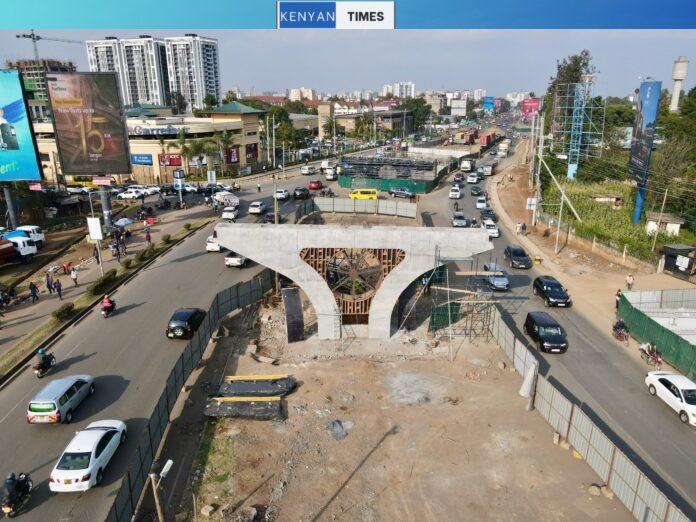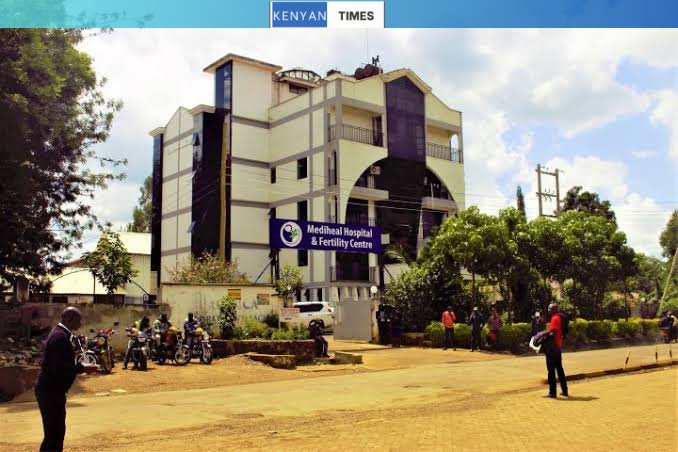NAIROBI, Kenya, Aug 2 – Some Kenyans are joking that the federal government is now constructing homes on the street, whereas others declare it’s Nairobi’s boldest transfer but in inexpensive housing.
But the Kenya Urban Roads Authority (KURA) is laughing it off, dismissing the viral rumours in regards to the “housing-like” constructions popping up alongside Kenyatta Avenue.
Speaking on the website, Eng. Benjamin Asin, Assistant Director within the Directorate of Urban Roads Design and Planning, clarified that the concrete pillars being erected usually are not homes, however a part of a short lived security wall supporting the development of a viaduct.
“I’ve seen people asking why we are building houses on the road. Just to clarify, these are not houses,” he stated with a chuckle.
A viaduct, he defined, is a kind of elevated street or bridge constructed over land to assist automobiles bypass obstacles like valleys, railways, or congested roads, very similar to the Nairobi Expressway.
The non permanent masonry wall, which has sparked a lot hypothesis, is there to guard each employees and the general public because the Valley Road–Kenyatta Avenue interchange and overpass development positive aspects momentum.
“This is an active zone with a lot of activity. It requires heavy machinery, so we need a very efficient holding structure,” stated Eng. Asin. “The wall will be removed once the works are complete.”
According to KURA, the viaduct will join from the Milimani Law Courts frontage to the National Library, making a unidirectional visitors circulation designed to ease gridlocks that incessantly paralyze the world.
The 0.7-kilometre interchange begins at Integrity Centre and stretches towards Serena Hotel, with one other department underneath development at Milimani Close. The broader venture additionally contains the growth of Nyerere Road, State House Road, and Ngong Road.
“We have major traffic jams around here due to conflicting movements. This viaduct will help us fix that by establishing a one-way traffic system in and out of Upper Hill,” he stated.
Beyond easing automobile congestion, the venture additionally contains walkways and biking tracks, catering to Non-Motorized Transport (NMT) customers.
“To the normal mwananchi, this road is going to help,” Eng. Asin added. “We’re improving active mobility walkways from Valley Road all the way into the CBD.”
According to the Engineer, the venture had initially stalled as a consequence of non-payment of contractors, a problem linked to a Ksh175 billion backlog in pending street payments inherited by President William Ruto’s administration.
The money owed owed to 580 contractors had introduced the development trade to its knees.
But by way of a securitization intervention, the federal government unlocked funds to restart crucial roadworks together with this interchange.
Construction of the Valley Road–Kenyatta Avenue/Ngong/Nyerere Road Interchange and the Upper Hill–Haile Selassie Overpass, together with related street networks in Nairobi County, resumed in earnest.
The venture initially broke floor on seventeenth September 2020 and was slated for completion inside 36 months (3 years).
However, the monetary delay pushed the timeline.
“The contractor is now on site, highly mobilized and has commenced work on the remaining sections including the viaduct. This section will be elevated, with service roads on either side, just like what we have on the Expressway,” stated Eng. Asiතෙල්
With the revised schedule, the venture is now anticipated to be accomplished by seventeenth December 2026.
Eng. Asin in conclusion is urging Nairobians to relaxation straightforward, noting that there aren’t any residences arising in the midst of the street. Just a daring, elevated step towards fixing the town’s visitors nightmare.




